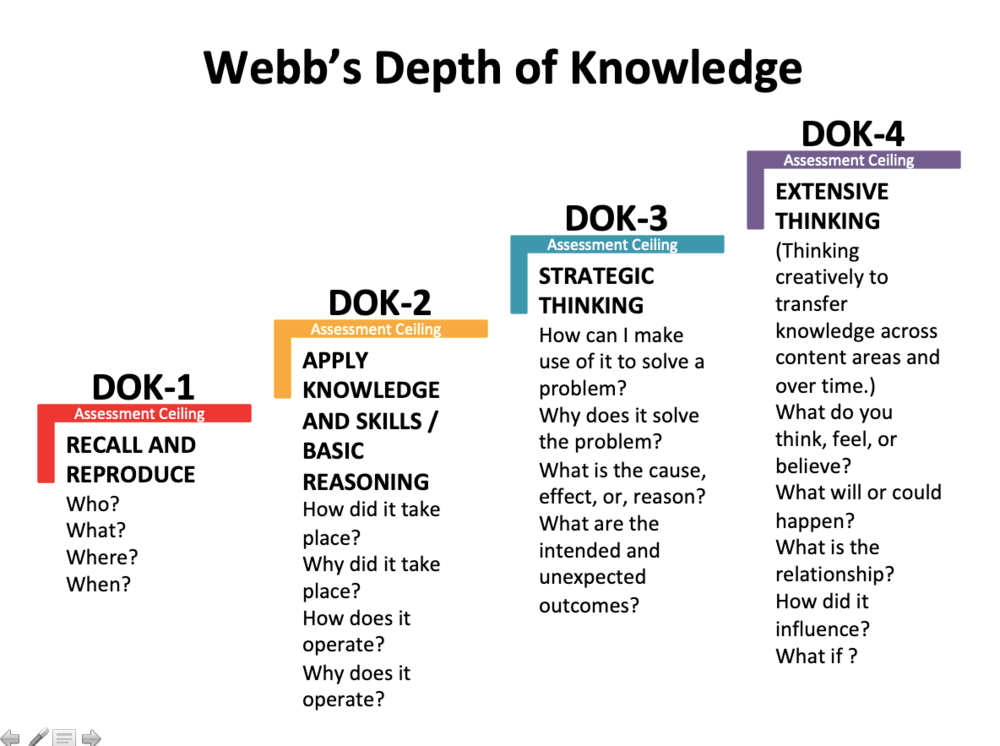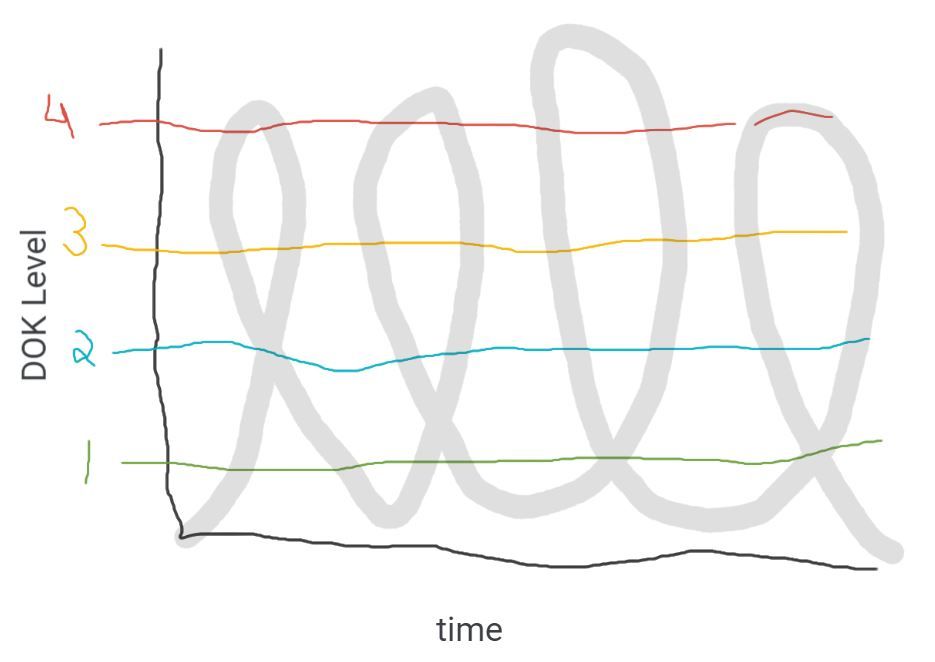The Natural Hazards unit overview incorporates a wide array of cognitive rigor and learning demands. It appears that the rigor is progressive and building towards students demonstrating their understanding in the summative assessments (quiz or Hazard Magazine) as well as formative assessments throughout the unit. I recognize the value of a step-by-step/linear type progression; however, I wonder how the instructor intends on facilitating the lessons. What I mean by this is, will the rigor of the lessons progress in a step-by-step/linear manner where a student might only have one access point to the content like in the following image:

Or will students have multiple opportunities to engage in as many DOK and Blooms Taxonomy levels as possible during each lesson - something like my drawing below:

The unit and individual lessons might very well provide many opportunities to engage students at various levels, but this was just something I was not able to ascertain from only reading the unit overview.
To further support the learning goal that states students will be able to analyze communities' reactions to earthquakes, perhaps I might suggest including a RAFT2 activity (Role, Audience, Format, Topic, Task). Depending on how the exercise is structured, students can engage in all four language domains. It might be beneficial to provide students with a choice of roles, audiences, formats, and topics. The task might be something similar for all students - persuade your audience. The activity provides all students with an opportunity to recall, clarify, and question what they know and what they still wonder about as they analyze media and other resources.